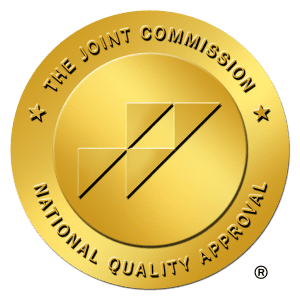
The journey to recovery from substance use disorders doesn’t end when the initial withdrawal symptoms subside. For many people, a challenging second phase begins weeks or months after detoxification—a condition known as Post-Acute Withdrawal Syndrome (PAWS). While often overlooked in discussions about addiction treatment, PAWS represents one of the most significant hurdles to maintaining long-term sobriety and a leading cause of relapse.
This guide explores what happens to your brain and body during post-acute withdrawal, what symptoms to expect, how long they typically last, and most importantly, effective strategies for managing these symptoms while maintaining your recovery. Whether you’re personally experiencing protracted withdrawal symptoms, supporting a loved one through recovery, or a healthcare professional working with patients in early sobriety, understanding this critical phase can significantly improve outcomes and quality of life during the healing process.
Prevalence and Impact of PAWS in Recovery
Research indicates that protracted withdrawal is extremely common among those in recovery, though its prevalence varies significantly depending on the substance:
- Opioid recovery: Approximately 90% of people recovering from opioid use disorder will experience symptoms of PAWS.
Alcohol withdrawal: Studies reviewed in a systematic analysis published in the National Library of Medicine indicate that post-acute withdrawal syndrome symptoms from alcohol can persist for 4-6 months or longer after cessation, with sleep disturbances potentially continuing for 1-3 years. - Benzodiazepine withdrawal: Research suggests that benzodiazepine withdrawal, particularly from medications like Xanax, can cause some of the most persistent PAWS symptoms, with some individuals reporting symptoms lasting for years after detoxification, particularly following abrupt cessation.
The prevalence and severity of symptoms of post-acute withdrawal syndrome correlate strongly with factors such as:
- Duration of drug use
- Quantity typically consumed
- Age (with older adults often experiencing more severe and prolonged symptoms)
- Method of cessation (with abrupt “cold turkey” detoxification often leading to more intense PAWS symptoms)
What is Post-Acute Withdrawal Syndrome?
Post-acute withdrawal syndrome (PAWS) represents one of the most challenging yet least discussed aspects of addiction recovery. When someone stops using drugs or alcohol after prolonged substance abuse or active addiction, they typically experience acute withdrawal symptoms that last days to weeks. However, many people are unprepared for what comes next: a constellation of persistent symptoms known as post-acute withdrawal syndrome that can last for months or even years during the recovery journey.
Protracted withdrawal symptoms occur because substance dependence fundamentally changes brain chemistry and function. While the acute withdrawal phase involves primarily physical symptoms like muscle aches, nausea, headaches, and increased heart rate, post-acute withdrawal syndrome symptoms are more psychological and emotional in nature. As the brain works to restore balance without the substance, individuals experience a range of psychological and physical symptoms that can threaten recovery if not properly understood and managed.
Common PAWS Symptoms to Watch For
Cognitive Difficulties
Many people in early recovery report “brain fog” and other common symptoms of cognitive impairment as prominent manifestations of post-acute withdrawal syndrome. These may include:
- Difficulty concentrating on tasks that previously came easily
- Memory problems, particularly with short-term memory
- Trouble solving problems or thinking clearly
- Slowed reaction times and difficulty processing information
These cognitive symptoms of PAWS often fluctuate in intensity, with good days followed by unexpectedly difficult ones, creating what many describe as a rollercoaster effect that can be frustrating and confusing.
Emotional Instability
Perhaps the most distressing aspects of post-acute withdrawal syndrome involve emotional regulation:
- Mood swings that seem to come out of nowhere
- Anxiety and panic attacks, even in previously comfortable situations
- Depression or persistent feelings of emptiness
- Irritability and sudden anger over minor issues
- Anhedonia (inability to feel pleasure from normally enjoyable activities)
- Intense cravings that can appear unexpectedly, even after extended periods of sobriety
These emotional symptoms can be particularly challenging because they may resemble the very reasons many people began substance use in the first place, especially for those dealing with anxiety & depression.
Sleep Disturbances
Sleep disturbances are among the most common and persistent symptoms of post-acute withdrawal syndrome:
- Insomnia or difficulty falling asleep
- Disturbing dreams or nightmares
- Irregular sleep patterns with periods of exhaustion
- Unsatisfying sleep even when getting adequate hours
Poor sleep compounds other PAWS symptoms and creates a vicious cycle that can jeopardize mental health and increase risk of relapse during the recovery process.
Physical Manifestations
Physical symptoms of protracted withdrawal often include:
- Unexplained aches and pains throughout the body
- Fatigue and low energy despite adequate rest
- Heightened sensitivity to stress and physical stimuli
- Coordination problems or occasional clumsiness
- Cravings for the substance that may come and go unexpectedly
These physical symptoms can be particularly confusing because they often mimic other health conditions, leading some people to question whether something else is wrong.
Timeline: When Do PAWS Symptoms Appear and How Long Do They Last?
Understanding the typical timeline of post-acute withdrawal syndrome can help individuals prepare for and navigate their recovery journey more effectively:
- 1-2 weeks after acute withdrawal phase: Initial symptoms of PAWS often begin to emerge
- 1-3 months: PAWS symptoms typically peak in intensity
- 3-6 months: Many people experience a gradual reduction in symptoms
- 6-24 months: Symptoms continue to diminish but may occasionally reappear, especially during stress
The timeline varies significantly depending on:
- Type of substance used (whether alcohol, opioids, or other substances)
- Duration of active addiction
- Individual biology and health conditions
- Co-occurring mental health conditions
- Recovery environment and support
Post-acute withdrawal syndrome symptoms often follow a pattern of waves, with symptom-free periods followed by intense episodes—a phenomenon sometimes called “windows and waves” or described as a rollercoaster. Symptoms can be triggered by stress or reminders of past drug use, and tend to occur less frequently as individuals progress into long-term recovery. This unpredictable nature makes it crucial for those in recovery to understand that temporary symptom reappearance doesn’t indicate failure or permanent setback.
Can PAWS Symptoms Be Avoided?
While it may not be possible to completely avoid protracted withdrawal, there are effective approaches to manage and reduce its impact. Post-acute withdrawal syndrome is a necessary part of the healing process as your brain and body recover from substance use disorders. The most severe and long-lasting symptoms typically occur in those recovering from:
- Alcohol use disorder (alcohol withdrawal)
- Benzodiazepines (such as Xanax)
- Opioids (including prescription painkillers)
- Heroin
- Methamphetamine
- Fentanyl
The detoxification process from these substances can be intense and potentially life-threatening if not conducted under proper medical supervision.
For individuals with these substance use disorders, preparing for PAWS is an essential component of any treatment plan. Although you cannot entirely prevent post-acute withdrawal syndrome, you can significantly reduce its severity and duration through proper healthcare support and comprehensive treatment approaches.
Managing PAWS Symptoms During Recovery
Successfully navigating post-acute withdrawal syndrome requires a comprehensive treatment plan with various interventions:
Professional Support
Working with addiction treatment specialists who understand protracted withdrawal is crucial:
- Medication assisted treatment may help alleviate specific symptoms
- Behavioral therapy approaches like Cognitive Behavioral Therapy (CBT) can provide coping strategies
- Regular check-ins allow for symptom monitoring and treatment plan adjustments
Both inpatient and outpatient treatment options can be effective, depending on the severity of symptoms and individual needs. At Grata House in Ventura County, our team incorporates PAWS symptom management into our comprehensive treatment program, ensuring clients understand what to expect during early recovery.
Lifestyle Adaptations
Certain self-care habits can significantly reduce post-acute withdrawal syndrome symptoms:
- Regular exercise helps regulate brain chemistry and improve mood
- Nutrition-focused eating provides the building blocks for brain healing
- Consistent sleep schedule supports neurological recovery and addresses sleep disturbances
- Stress management techniques like meditation reduce symptom intensity and promote general well-being
Social Connection
The importance of social support cannot be overstated:
- Support groups provide validation and coping strategies from others experiencing similar challenges
- Sober community involvement offers connection without substance use
- Family education helps loved ones understand and support the recovery process
When family members and friends understand that post-acute withdrawal syndrome is a normal part of recovery, they can provide more effective support to their loved one going through the process.
Holistic Practices
Complementary approaches can significantly reduce symptoms of PAWS:
- Meditation and mindfulness practices help manage anxiety and improve present-moment awareness
- Yoga combines physical movement with stress reduction
- Deep breathing exercises can interrupt escalating symptoms
- Journaling provides emotional release and symptom tracking
These holistic practices, when combined with traditional treatment approaches at a reputable treatment center, create a comprehensive strategy for managing post-acute withdrawal syndrome effectively.
Why Understanding PAWS Symptoms Matters for Long-Term Recovery
Many relapses occur not during acute withdrawal but during the extended period when post-acute withdrawal syndrome challenges recovery. Understanding triggers and recognizing that these symptoms:
- Are a normal part of the healing process
- Don’t indicate personal failure
- Will gradually improve with time and proper care
- Require comprehensive management strategies
This knowledge can make the difference between maintained long-term recovery and relapse. By recognizing symptoms of PAWS as they appear, individuals can implement appropriate coping strategies rather than returning to substance abuse for relief.
One of the most important things to remember is that post-acute withdrawal syndrome is temporary. Even when symptoms feel overwhelming or permanent, the brain is gradually healing and rebalancing. This perspective allows individuals to view difficult days as part of the recovery journey rather than setbacks that threaten sobriety.
The risk of relapse is significantly reduced when people understand that cravings, mood swings, and other common symptoms of protracted withdrawal are normal and will eventually subside with proper treatment and support.
Finding Help for PAWS Symptoms in Ventura County
If you or a loved one is experiencing post-acute withdrawal syndrome during recovery, specialized healthcare support is available. At Grata House, our approach to addiction treatment incorporates education about PAWS and provides specific treatment options for managing these challenging symptoms.
Contact our compassionate team to learn more about how we can support your sustainable recovery journey through the challenges of protracted withdrawal and beyond. We’ll work with you to develop a personalized treatment plan that addresses your specific needs and health conditions.

